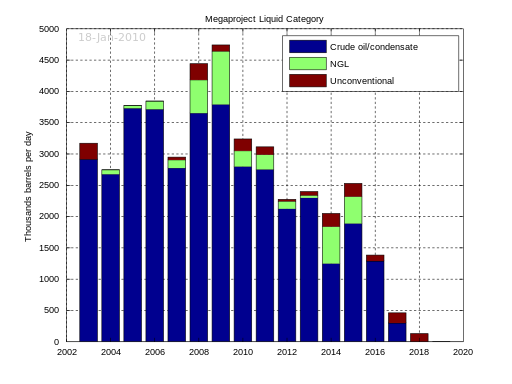Re: The crash course: Chapter 17a: Peak Oil
lonewolf wrote:Barrel of oil equivalent (boe) = approx. 6.1 GJ (5.8 million Btu), equivalent to 1,700 kWh.
(at 100% efficiency)
1,700 kWh/bbl x 13 x10^6 bpd (import?) to US
= 22,100,000,000,000 Whd
= 22,100 Gigawatt/day
= 22.1 Terawatt/day
HOWEVER!
FROM WIKI :The terawatt is equal to one trillion watts. The total power used by humans worldwide (about 16 TW in 2006) ..."
WTF? 16 TW/yr? yeah right!
ugh. You've got to get your math and units straightened out. Don't feel nbad...it's a very common mistake.
A watt isn't a unit of work...it's a unit of instantaneous power. You have to convert to watt hours, or kilowatt hours, to get your equivalents
The top portion of your math you dropped "hours". It would be correct to say we are burning the equivalent of 22.1 terawatt-hours per day. But even that math is worng...sorry
The total electrical power generation in the united states is about 4 trillion kilowatt-hours per year (according to wiki) almost HALF of that is coal. About 22% is other fossil fuels of various sorts. The rest is nuke, hydro, and alternatives.
If a barrel of oil is equivalent to 1700 kwh (I didn't check, but it sounds reasonable, I think), and we are using about 20 million barrels per day, then we are burning the equivalent of 34 billion kwh per day, or 1.241 trillion kwh hours per year. Part of that is going to run the grid already, of course, so you can't sum the two to get totals.
Anyway: take away our imported oil, and we are losing about 800 billion kwh of work, annually. That's a whole lot of additional grid capacity that's required to offset!
OK, I think my math is right...but you never know. I may have screwed up a decimal somewhere too!
 but I think you all are real sports on this. Fun site this is.
but I think you all are real sports on this. Fun site this is. 

 How many gallons of algae biofuel are being produced
How many gallons of algae biofuel are being produced